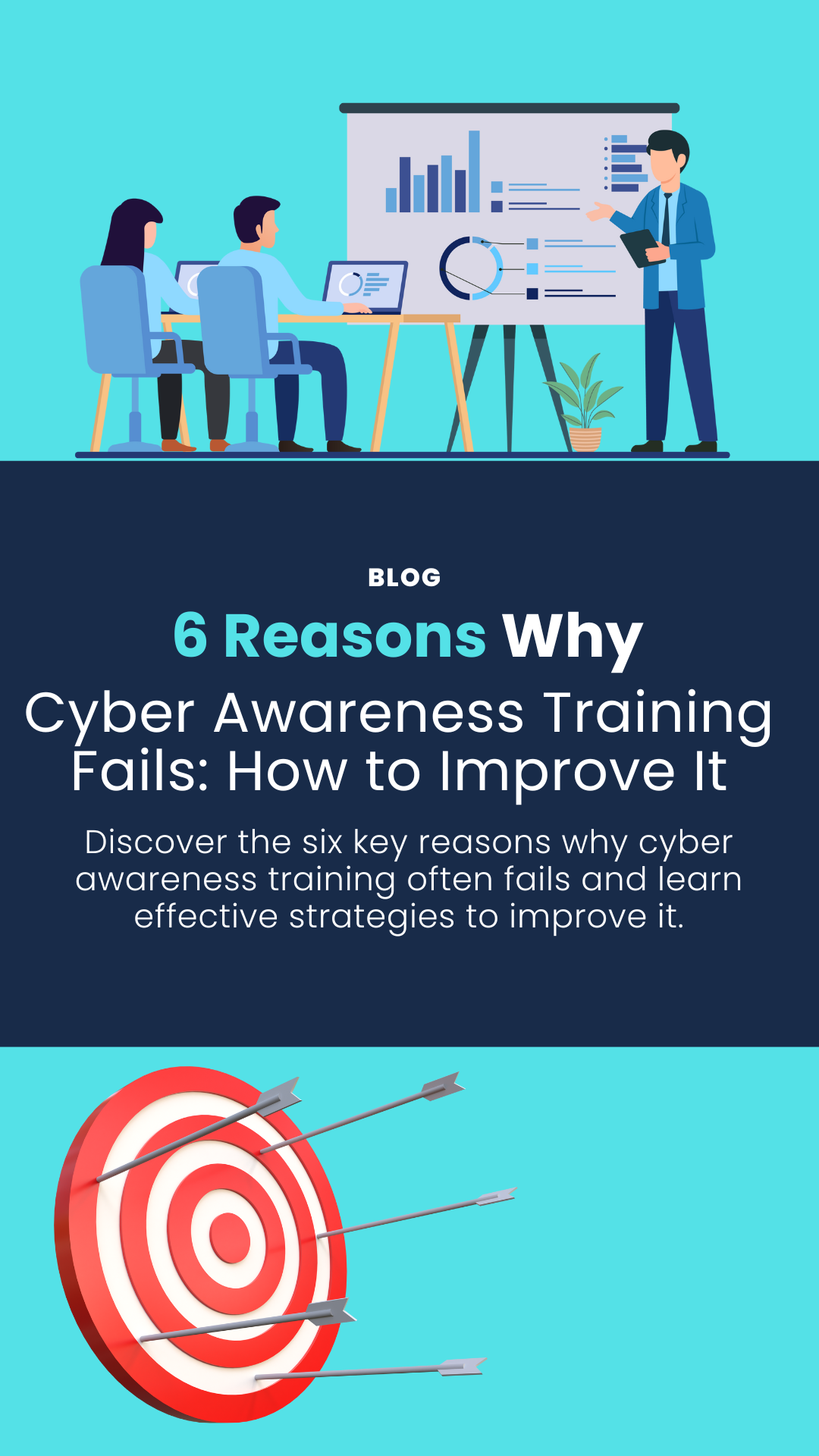You’ve likely heard a lot about AI lately, with plenty of voices quick to paint a picture of doom and gloom. It’s easy to get caught up in the whirlwind of scaremongering. But when we cut through the noise, what does AI really mean for the landscape of cyber-attacks? How do we, as the guardians against these threats, need to adapt and respond?
It’s not about spreading fear; it’s about understanding the changing tides and preparing ourselves for what’s coming. Our focus should be on the practical implications of AI in Cyber Security and how it transforms the strategies of both attackers and defenders.

How Will AI Impact Cyber Attacks?
Let’s be clear about where AI stands in Cyber Security: there’s still a lot of unknowns. The use of AI in cyber-attacks is changing fast, but it’s still early days. Even with all the uncertainty, there are definite actions you can take today to strengthen your defences against these changing threats.
Recently, the National Cyber Security Centre (NCSC) shared a deep dive into how cyber-attacks are evolving, shedding light on how artificial intelligence is reshaping the Cyber Security landscape.
As a security leader, you’re already tuned into the fact that AI is reshaping the cyber threat landscape, altering attack frequencies, severity, and methodologies. Given your role, this isn’t news. But let’s delve deeper into the NCSC’s findings and focus on strategic responses to help you stay ahead of these shifts.
1. Unravelling the Impact of AI Cyber Attacks
So, how exactly will AI shape the cyber threat landscape? Let’s break it down:
Understanding the NCSC Key Judgements
Let’s start by dissecting the key judgements laid out by recent assessments from the NCSC analysis, shedding light on the ways in which AI will reshape the cyber threat landscape:
- AI's Universal Adoption:
AI is getting popular with everyone, from big government agencies to solo hackers. It’s not just for the tech industry anymore – it’s the latest gadget in every cyber attacker’s toolkit. This means that advanced hacking tricks, once kept secret by a few, are now up for grabs by anyone with an internet connection.
- Enhanced Capabilities in Reconnaissance and Social Engineering:
Picture a cyber attacker armed with AI tools, making them more effective, efficient, and elusive than ever before. The NCSC reports that cyber-criminals, including ransomware operators, are using AI to boost their operations in areas like reconnaissance, phishing, and coding. This trend is expected to persist and expand beyond 2025, with AI helping to make phishing attacks—key for initial network breaches—more sophisticated. This likely means a rise in effective ransomware and other cybercrimes.
- Restrictions on Sophistication:
The NCSC highlights a silver lining (for now). Currently, the most sophisticated AI-driven cyber-attacks are still out of reach for many, limited by the need for significant resources, expertise, and high-quality data.
Up to 2025, the NCSC predict that only well-resourced state actors, established criminal groups and some commercial entities are likely to advance in using AI for complex cyber-attacks, including social engineering and data exfiltration.
But as AI technology continues to evolve, these barriers may erode over time, posing new challenges for defenders.



- Impact Amplification Through Data Analysis:
By analysing exfiltrated data faster and more effectively, threat actors can train AI models to become even more lethal. Simply put, the progression in data analysis will allow cyber-criminals to pinpoint and go after your essential assets with greater speed and precision.
It also means that data from each successful attack will fuel the next wave of AI-powered assaults. It’s a call to action to put the improved protection of your critical data and systems at the top of your security agenda.
- Malware Development:
AI is set to make the development of malware, finding vulnerabilities, and moving within your systems faster and more efficient. But, at least for the near future, the most sophisticated cyber techniques will still need human brains behind them.
This means the immediate benefits of AI in cyber warfare are likely to be seized by those who are already at the top of their game. Looking ahead, the NCSC predicts AI could start producing malware that our current defences can’t catch, especially if it’s learning from a vast collection of high-quality data.
- The Increasing Challenge of Spotting the Hidden Threats:
The progress in AI, particularly with technologies like Generative AI (GenAI) and large language models (LLMs), is going to ramp up challenges in Cyber Security. This will blur the lines, making it tough for you to distinguish between genuine communications and malicious ones like phishing or spoofing, no matter the level of your security knowledge.
The window to patch systems between discovering a vulnerability and it being exploited by hackers is narrowing. This means the pressure is on for your network managers to secure systems faster than ever. And with cyber-criminals using AI to swiftly find and attack vulnerable systems, this race against time is only going to intensify.
- Lowered Barrier for Entry:
AI lowers the barrier for entry into the world of cyber-crime. Inexperienced threat actors now have easy access to AI tools, making effective access and information-gathering operations within reach. The attacks leveraging basic vulnerabilities, often called “low hanging fruit,” are likely to increase.
This means that straightforward security measures, like keeping systems updated, using strong passwords, patching vulnerabilities promptly, and training your team in security awareness, are more crucial than ever. As the entry barrier for cyber-attacks lowers, doubling down on these security basics isn’t just good practice—it’s essential for keeping ahead of threats that are becoming easier for attackers to execute.
2. The Assessment: The Extent of capability uplift caused by AI over the next year.

Picture sourced from NCSC: Click here to access
What should you be thinking about for your organisation?
With AI shaping the future of cyber-attacks, you’re probably wondering how to shield your business from these new threats. Let’s be clear: the future of AI in Cyber Security is still filled with uncertainty. Whilst it is impossible to predict everything that’s going to happen, there are ways to better protect your business.
When it comes to protection—there’s no silver bullet for AI-related security issues. Effective security is about consistency, layers, and adapting to uncertainty.
Here are some practical steps to fortify your defences today:
Deepening Training and Awareness:
Building a strong defence means ensuring your team is up to speed on AI-driven threats, including recognising the risks and signs of emerging tactics like deepfakes and AI-generated phishing, vishing and smishing scams.
It’s not just about having regular training sessions; it’s about the depth and relevance of these sessions. This brings up a couple of critical questions:
- What topics do your security awareness training and phishing simulations cover?
- Are you confident that the content is updated regularly to reflect the latest threats?
The success of your training programme depends on how well it reflects the actual threats your team might encounter. This involves integrating the latest cyber-attack trends, particularly AI-driven methods, into both your training sessions and phishing simulations.
For example, using a deepfake video of your CEO in a phishing drill, then following up with targeted training about the risks of deepfakes and evolving AI-driven attacks could be incredibly effective.
The more your team knows about the dynamic nature of cyber threats, the more capable they will be at spotting and dealing with them.


Defence in Depth:
A defence-in-depth strategy is key for warding off sophisticated cyber-attacks. It layers security defences, ensuring that if attackers break through one barrier, they’re met with more obstacles.
This multi-layered approach minimises the chances of a breach happening through just one vulnerability. Imagine a hacker slipping past your firewall; they’re not home free. They’ll still face hurdles like intrusion detection systems, encryption, access controls and multi-factor authentication.
Each layer makes it increasingly tougher for intruders to access critical data or systems. But it’s not just about tech defences. A solid defence-in-depth strategy also includes clear policies, smart procedures, and thorough employee training.
AI Defence, Turning the Tables on Cyber Threats:
The way forward in Cyber Security is to use the same advanced tech—like AI and machine learning—that hackers use against us. It’s a case of fighting fire with fire.
As cyber threats get smarter and more frequent, we’ve got to fight back with the best tools available. The good news is that the same high-level AI and machine learning capabilities powering these attacks can also protect us. It’s all about turning the attackers’ weapons to our advantage.
Here are some ways that AI could be incorporated into your security strategy:
Adding AI into a defence-in-depth strategy could be the answer to upping your security game against AI attacks. This could involve your security team using AI and machine learning (ML) to get ahead with better threat intelligence, faster responses through automation, and stronger predictions to prevent cyber-attacks.
Organisations can improve threat detection and response by incorporating AI and ML into their security measures. This technology helps in identifying threats with greater precision. It also enables organisations to react to threats promptly and effectively.

Here’s how AI and ML can fortify different layers of your Cyber Security:
- Anomaly Detection: By learning what normal network behaviour looks like, AI can spot and alert you to odd activities, like strange data movements or login attempts, signalling a possible security breach.
- Predictive Analytics: ML algorithms dig through historical cyber-attack data to foresee and prevent potential future attacks.
- Phishing Detection: AI examines emails for phishing signs, such as dubious links or language, helping nip many cyber-attacks in the bud.
- Automated Response: AI doesn’t just detect threats; it can take immediate action, like isolating an attacked system to curb damage spread.
- Threat Detection and Intelligence: AI assists in collecting and analysing data on emerging threats and attackers, keeping you a step ahead of cyber-criminals.
- User Behaviour Analytics: By monitoring user behaviour, AI can flag unusual actions, like a user logging in at odd hours, as potential security risks.
- AI-Powered Antivirus: Moving beyond traditional antivirus definitions, AI-powered solutions can proactively block new, unknown threats by analysing file behaviour.
Is Your Business Ready for the Next Wave of Cyber Threats?
Equilibrium is here to help. Our Cyber Security professionals are at the forefront, ready to assist you in protecting your sensitive data against these advanced threats.
Need guidance on tackling AI-driven cyber threats? Reach out to Equilibrium at 0121 663 0055 or enquiries@equilibrium-security.co.uk.
Ready to achieve your security goals? We’re at your service.
expertise to help you shape and deliver your security strategy.
About the author




